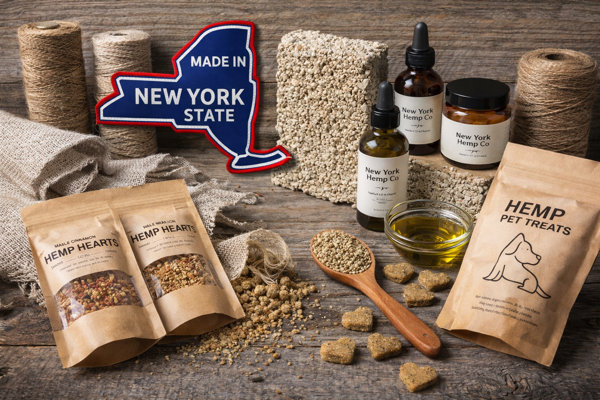Multi-Day Horseback Riding Trails in New York State

For riders seeking true adventure, few experiences compare to a multi-day horseback journey — traveling trail to trail, camping overnight, and immersing yourself in the landscape. While New York State is known for its extensive trail networks, only a select few areas are designed to support multi-day equestrian travel with camping access.
Fortunately, New York does offer several well-established trail systems where riders can legally plan 3–4 day trips with horses, camp along the way, and enjoy some of the state’s most scenic terrain.
1. Brookfield Trail System (Central New York)
The Brookfield Trail System is widely considered the premier destination for multi-day horseback riding in New York State. Located in Madison and Chenango counties, this network includes over 130 miles of marked trails across state land, private property, and town roads.
Why It Works for Multi-Day Rides
- Extensive interconnected loop system
- Designated equestrian camps
- Horse-friendly camping areas
- Water access and open riding terrain
- Well-maintained and clearly marked routes
Riders can easily plan 3–4 day loops without retracing the same trail twice, making Brookfield a favorite among endurance riders and long-distance trail enthusiasts.
2. Allegany State Park (Western New York)
Allegany State Park is one of the largest state parks in New York and offers an extensive equestrian trail network suitable for extended riding trips. The park includes over 100 miles of trails, many of which are open to horses.
Equestrian Camping at Allegany
- Designated equestrian camping areas
- Trailer parking and horse-friendly campsites
- Access to water sources
- Loop-based trail system for multi-day planning
With its rolling hills, forested paths, and quiet backcountry sections, Allegany State Park is well suited for riders looking for a structured, legal multi-day riding experience.
3. Tug Hill Region (Selected Trail Systems)
The Tug Hill Plateau offers several equestrian-accessible trail systems that can support extended rides when carefully planned. While not all trails are designated specifically for horses, certain multi-use networks and seasonal access routes allow for longer excursions.
Important Notes for Tug Hill Riders
- Trail access may be seasonal
- Camping rules vary by location
- Advance planning is essential
- Local trail organizations are valuable resources
Tug Hill is best suited for experienced riders familiar with backcountry travel and navigation.
4. Finger Lakes National Forest (Extended Loops)
Located between Seneca and Cayuga Lakes, the Finger Lakes National Forest allows equestrian use on designated trails. While most rides are day-based, the forest’s loop system and nearby camping options make it possible to plan multi-day itineraries.
Riders should note that horses are not permitted in developed campground areas, so planning must align with forest regulations.
Key Planning Considerations for Multi-Day Rides
Camping & Horses
- Only camp in designated equestrian or primitive camping areas
- Use portable electric fencing or high-line systems where allowed
- Follow Leave No Trace principles
Grazing & Feed
- Confirm grazing rules before your trip
- Carry supplemental feed if required
- Use weed-free hay when mandated
Permits & Regulations
- Check state park or forest rules ahead of time
- Confirm negative Coggins requirements
- Respect seasonal trail closures
Is New York Right for Long-Distance Riding?
While New York does not yet offer a single continuous long-distance equestrian trail spanning hundreds of miles, it does provide well-managed regional systems ideal for 3–4 day horseback trips. These areas balance access, safety, and environmental protection — making them excellent destinations for riders seeking authentic trail experiences.
With thoughtful planning and respect for trail rules, multi-day horseback riding in New York State can be both rewarding and unforgettable.

Five Surprising Hemp Products Made in New York State

New York’s hemp industry is growing fast — and it’s not just about CBD oils or supplements. Across the state, farmers, makers, and small businesses are transforming hemp into innovative products that might surprise even lifelong New Yorkers.
Here are five unique hemp-based products created right here in the Empire State.
1. Hempcrete Building Materials
Some New York builders and eco-focused companies are turning hemp stalks into hempcrete — a lightweight, sustainable building material used for insulation, wall systems, and energy-efficient construction. It’s fire-resistant, mold-resistant, and carbon-storing, making it appealing for green-friendly home projects.
2. Hemp-Based Clothing & Textiles
Small textile makers and upstate fiber mills are experimenting with hemp-blend fabrics for clothing, hats, bags, and durable everyday wear. Hemp fiber is naturally strong and breathable, giving NY-made textile products a long-lasting, eco-conscious appeal.
3. Gourmet Hemp Heart Snacks
New York’s farm-to-table movement has embraced hemp hearts as a versatile superfood. Local producers now offer flavored hemp snacks — everything from maple-roasted seeds to savory herb blends — perfect for healthy snacking, salads, and smoothie bowls.
4. Hemp Seed Oil Skincare
Several NY wellness makers craft gentle skincare formulas using cold-pressed hemp seed oil. Unlike CBD oils, hemp seed oil comes from the seed itself, offering natural moisturizing benefits without cannabinoids. You’ll find New York-made lotions, soaps, balms, and facial oils at markets and boutique shops across the state.
5. Hemp Pet Treats
Yes — hemp is even showing up in New York’s pet market! A handful of small businesses produce hemp-based pet treats using hemp hearts or hemp protein as the foundation for high-nutrient biscuits and chews. They’re popular with dog owners looking for grain-free, protein-rich alternatives.
Where to Find These Products
You’ll spot New York-made hemp items at:
- Local farmers markets
- Specialty food shops
- Craft fairs and artisan festivals
- Outdoor and wellness stores
- Online shops operated by NY growers and makers
As the industry grows, expect even more creative uses of this versatile plant. From construction materials to gourmet foods, hemp is quickly becoming one of New York’s most interesting and innovative agricultural products.
Whether you're traveling across the state or browsing locally, keep an eye out — the next great New York-made hemp product might surprise you.

Horseback Riding in New York State: Scenic Trails, Ranches, and Riding Adventures

From rolling farmland to Adirondack wilderness, New York State offers a remarkable variety of places to explore on horseback. Whether you're an experienced rider or trying it for the first time, the Empire State has riding trails, ranches, state parks, and guided tours for every skill level.
Why Ride in New York?
New York’s landscapes are incredibly diverse. Riders can experience:
- Mountain trails in the Adirondacks and Catskills
- Beachside riding along Lake Ontario and Long Island
- Open meadows and farmland across Central and Western NY
- Historic bridle paths in downstate preserves
The variety makes horseback riding one of the most memorable ways to experience the state’s natural beauty.
Top Places for Horseback Riding in New York
1. Adirondack Park
The Adirondacks offer miles of forested trails and wilderness loops. Several stables provide guided rides, and experienced riders can explore designated multi-use trails within the park’s vast backcountry.
2. Catskill Mountains
With sweeping overlooks, peaceful woodland paths, and classic Catskill ranches, this region is ideal for scenic day rides and family-friendly outings.
3. Finger Lakes Region
Known for its wineries and lakes, the Finger Lakes is also home to beautiful equestrian centers and rural trail systems. Many stables offer lake-view rides and wine-country horseback tours.
4. Long Island Beaches
Several stables offer seasonal or off-season beach rides — a bucket-list experience made even more magical at sunrise or sunset.
5. Western & Central New York
Wide-open farmland and gently rolling hills make this region perfect for relaxed rides, lessons, and ranch-style adventures.
New York State Parks with Bridle Trails
Many state parks welcome riders and provide marked bridle paths, including:
- Allegany State Park
- Brookfield Trail System (over 100 miles of trails)
- Watkins Glen State Park region (surrounding multi-use networks)
- Letchworth State Park (nearby riding stables)
- Minnewaska and Mohonk Preserve areas*
*Some areas require permits or day passes — check park rules before visiting.
Beginner-Friendly Riding Options
- Guided trail rides at ranches and stables
- Arena lessons for first-time riders
- Pony rides for younger children
- Group or private tours through scenic terrain
What to Expect on a Guided Ride
Most stables provide helmets, safety instructions, and a calm, well-trained horse. Rides typically last 30 minutes to 2 hours, depending on the location and terrain. Closed-toe shoes and long pants are recommended.
Tips for a Great Riding Experience
- Always call ahead or book online — many stables fill up on weekends.
- Bring water and sunscreen, especially during summer rides.
- If riding in autumn, reserve early — fall foliage rides are extremely popular.
- Follow guide instructions for safety and horse comfort.
Supporting New York’s Equine Community
Horseback riding contributes to local businesses, preserves farmland, and supports the state’s equine industry — from boarding barns and trainers to trail groups and tourism organizations.
No matter where you roam, exploring New York State on horseback is an unforgettable way to connect with nature, history, and the beauty of the Empire State's open spaces.

|
Hops in New York State Hops was first introduced to the United States in 1629 from England. In 1808, Madison county, New York was home to the first commercial hop yard in the United States. By 1860, the majority of American hops came from New York State (Otsego, Madison, and Schoharie counties). Cooperstown, NY was known as "The King of Hops." In 1909, a fungus was spreading on the hops crops and by 1920, the crop was basically destroyed by the downy mildew. The fungus was not totally to blame for the downfall of the hops, for in the West Coast, hops were being grown with greater yields per acre bringing the price down and taking away profits the hops farmers in New York were receiving. In the West Coast where it is drier, they did not have to worry about the fungus that was affecting New York State. Then came the Prohibition, which lead to a dramatic decrease in the need for hops. Today the Northeast Hops Alliance is a group of farmers and brewers promoting hops growing in New York State. ...>> |
